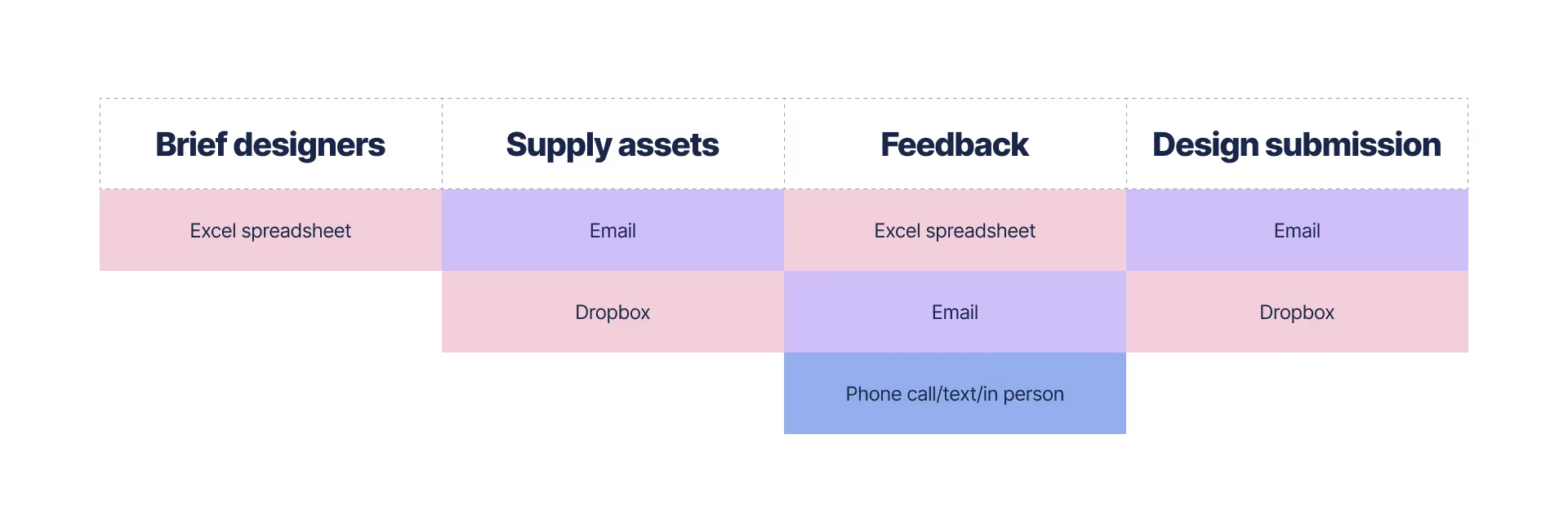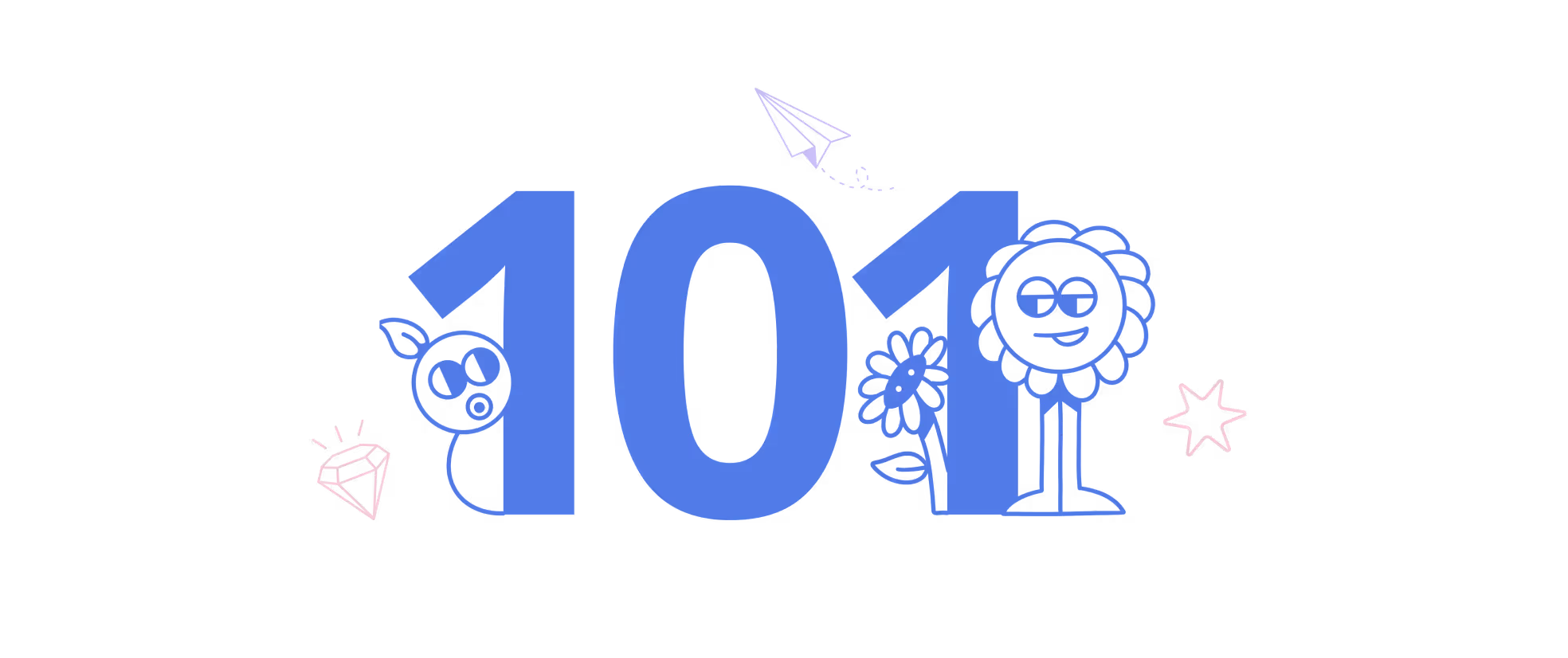How to double your output in half the time
Our one-word answer: workflows. Planning your resource into a streamlined, well-oiled machine will boost productivity for the client and the creative team, ensuring no wires get crossed. Get to know the process below.

Max White
Copywriter & Strategist
Max is often found searching west-county coastlines for the perfect “right-hander”. We’re not sure what that means, but he seems to enjoy the never-ending hunt for waves. He also happens to be a pretty handy wordsmith.
Max White
Copywriter & Strategist
What are workflows?
Workflow is a general term that describes a repeatable sequence of tasks that make up a business process.
While the very essence of a workflow implies order — things getting done in a particular sequence — workflows can be endlessly complex. The larger your organisation, the more moving pieces, and the more data you have, the more complex your workflow.
Workflows need to be accomplished in a specific order. For instance, in a content production workflow, you might have an assignment process, a writing process, an editing process, and a publishing process.
Why should you invest in your workflows?
Ideally, people create workflows for every project, but in reality, workflows are usually mapped out only after a situation becomes too complex to manage in an ad hoc way. Collaborators find themselves operating in silos, data gets duplicated or misplaced, and ultimately, deadlines get missed.
Signs you might need to invest in your workflow
- You find yourself in lengthy email or message threads with lots of back and forth.
- It’s hard to find previously completed work, assets or information. You have to request it from others, search back through emails, or dig through computer files.
- It’s hard to keep multiple collaborators on the same page and up to speed with the project progress.
- You find yourself in lots of briefing calls or meetings.
- Departments in your team are frustrated with each other. For example: the marketing team is frustrated with the design team and vice versa.
Benefits of investing in your workflow
- Improved employee engagement
- Higher quality products and services
- More clarity with less micromanagement
- Better all-around productivity
Case study
Gastronomous is a London-based marketing agency creating original experiential programmes in dining, travel and culture for leading global companies. We started our relationship with them in 2019, originally tasked with designing printed collateral for their experiential events. These events involve multiple brand partners, each supplying their own copy and imagery.
After the first year, we spotted an opportunity to streamline their workflow and improve the experience, productivity and end product.
Existing workflow
Like many companies, Gastronomous relied on a number of methods for briefing designers, managing the status of the assets, feeding back amends and storing the design deliverables. Their workflow followed the below structure.
We have seen similar workflows in a great deal of companies, and whilst not uncommon, the number of communication channels and the limitations of each can result in significant organisational challenges. In short, there are too many opportunities for balls to be dropped and mistakes to be made.
Our proposition was to look at the specific challenges within this workflow and propose below to them.

Our solution
We built Gastronomous a custom tool on AirTable. We designed a new process for them that automated repetitive tasks, minimised the risk of error and made the project more enjoyable for all. It now acts as a single source of truth for all of their assets, briefs and design feedback. In their words:
“Airtable was genuinely the perfect solution... it has saved a lot of time, frustration and stress, making our design process infinitely more efficient.”
Maddy Muirhead | Senior Events & Marketing Manager
Our workflow

Results
The difference Gastronomous has seen in their ways of working is huge. For one of their event series, London Restaurant Festival, we almost halved the communication required to get the job done. In 2020 there were 819 comments, questions and amends over the course of the series. The following year, with the same design requirements, this dropped to just 429 - with the right information accessible and easy to find.
Get Flowing
There are countless opportunities for workflow optimization, and the impact on productivity can be profound. If this article has resonated with you, then make a start by mapping out your current workflow - you may be surprised by how many moving parts there are when you take the time to look into it!


